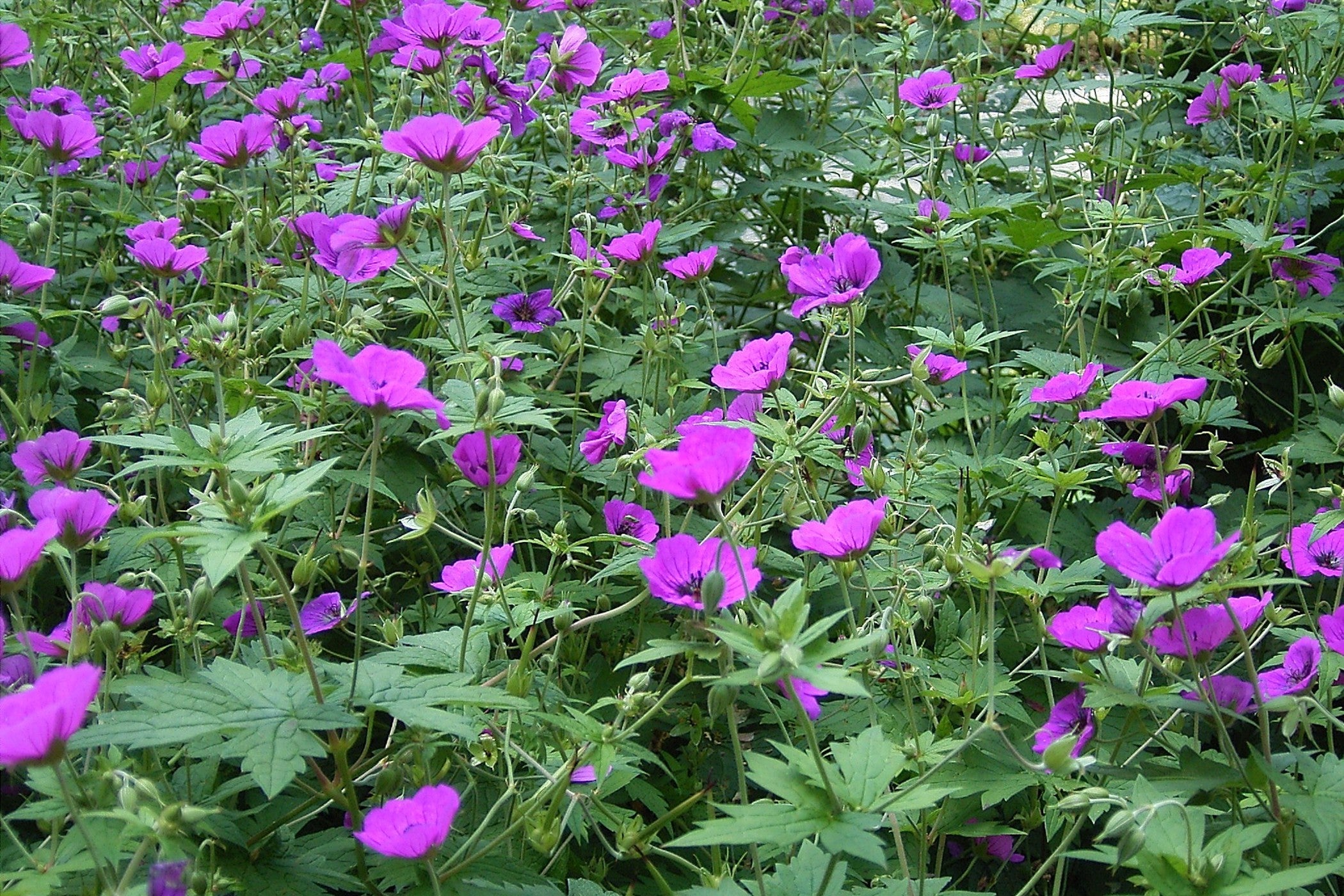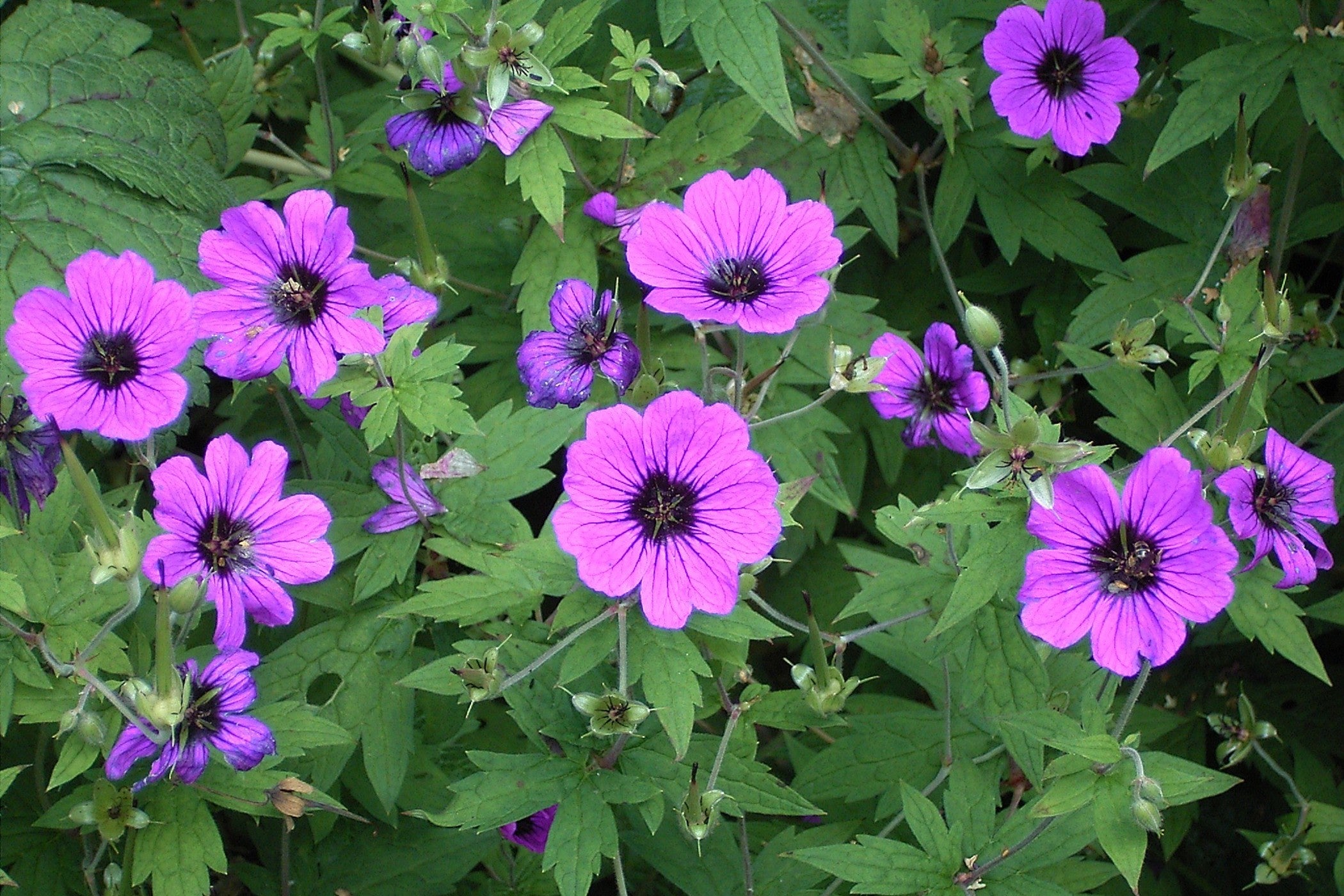Geranium psilostemon
Approx. 0.5 litre pot
About this cultivar:
Geranium psilostemon, commonly called Armenian cranesbill, is native to Turkey, Armenia, Azerbaijan, and the Russian Federation. It is tough. Forming a large clump it has glowing reddish purple coloured flowers with prominent dark centres, and divided leaves tinted red in Autumn. It has earned the Royal Horticultural Society's Award of Garden Merit.
The Latin specific epithet psilostemon means 'with smooth stamens'.
A big, brawny plant that has an uncompromising colour it, however, is well behaved and won't take over. It has quite a tidy habit, long flowering period, and prolonged autumn interest. Think of it as a well dressed nightclub bouncer, with its dark eye in each flower keeping an eye on proceedings and making sure no weeds misbehave anywhere near it. Every night club and every garden needs one.
- Position: Full sun, partial shade
- Soil: Almost any soil, grows well in Ballyrobert
- Flowers: June, July, August
- Other features: Royal Horticultural Society Award of Garden Merit (RHS AGM), Grows well in Ballyrobert
- Hardiness: H7 - Hardy in the severest European continental climates (< -20°C), Fully hardy - grows well in Ballyrobert!
- Habit: Clump forming, bushy, trailing
- Foliage: Deciduous
- Height: 75- 120 cm (2.5 - 4 ft)
- Spread: 90 - 120 cm (1.5 - 4 ft)
- Time to full growth: 2 to 5 years
- Plant type: Herbaceous Perennial
- Colour: Green, pink, black
- Goes well with: -
About this genus:
Geranium is a genus of 422 species of flowering plants found throughout the temperate regions of the world and the mountains of the tropics, They come in a variety of shapes and sizes and the five-petaled-flowers can be white, pink, purple or blue, often with distinctive veining. The genus name is derived from the Greek géranos meaning ‘crane’. The common name is‘cranesbill’. Why the crane reference? Well, some species in the Geranium genus have a distinctive mechanism for seed dispersal. This consists of a column which springs open when ripe and casts the seeds some distance. The shape of the unsprung column looks like the bill of a crane- therefore cranesbill!
Geranium is often confused with its close cousin Pelargonium (florist geranium). The two plants were originally lumped into the one genus (genus Geranium), but in the 1780s, the genus Pelargonium was split from Geranium. However, by that time the common name "geranium" for the florists plants was part of the public vernacular and it stuck.
Geraniums are not as flashy as many perennials, but are getting more and more popualr again as newer cultivars become more floriferous and for longer. The attractive foliage of Geraniums, combined with their blendable, butterfly-attracting, spring and summer flowers, make geraniums staples in the perennial garden.
The genus geranium has long been recognized as one of the most durable and easy to grow perennials for the garden. They love sun or part shade and will grow in any soil that isn't waterlogged.
How to use them? Oh, the list is endless and often depends on the specific geranium, its height, habit and colour - they are not just "ground cover" plants!




